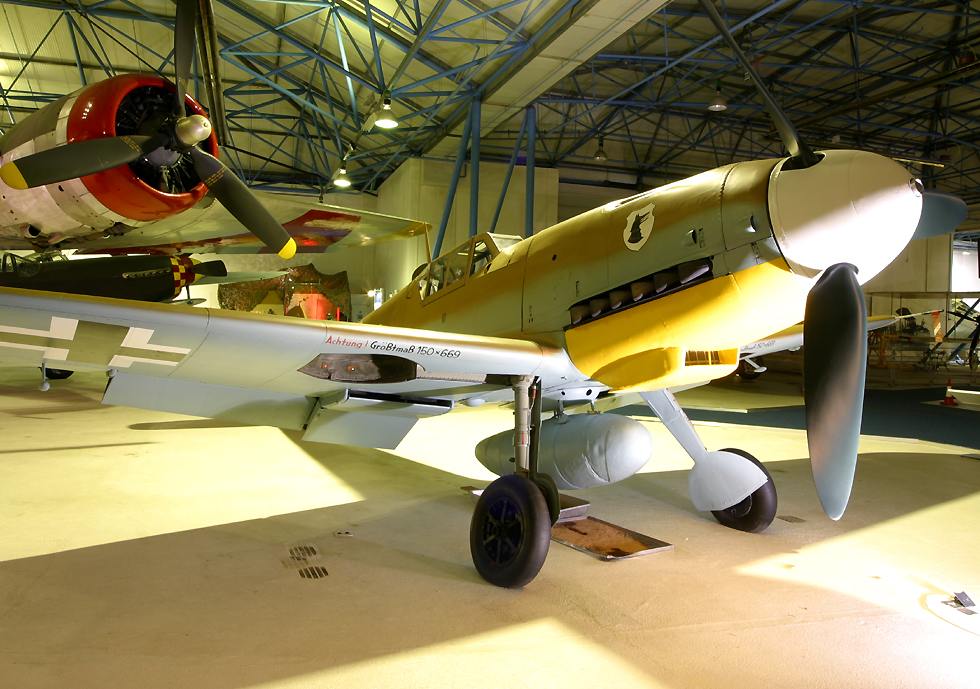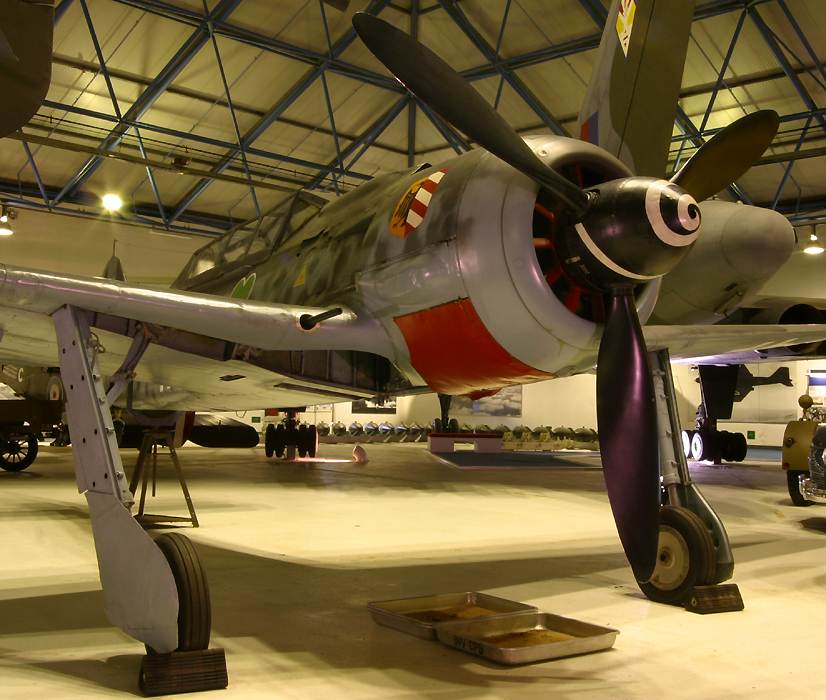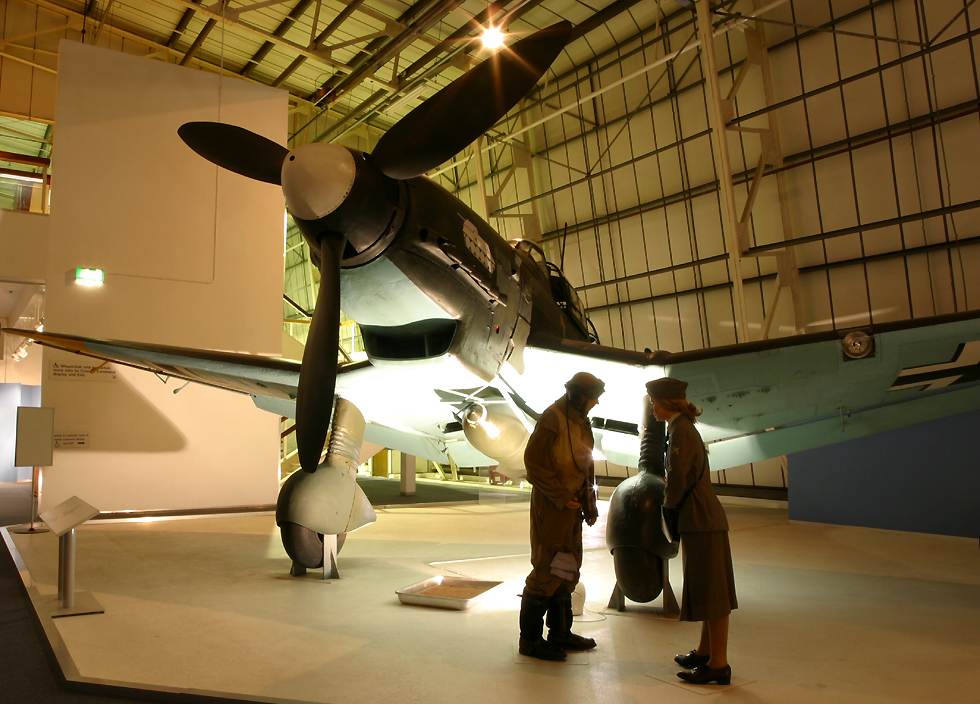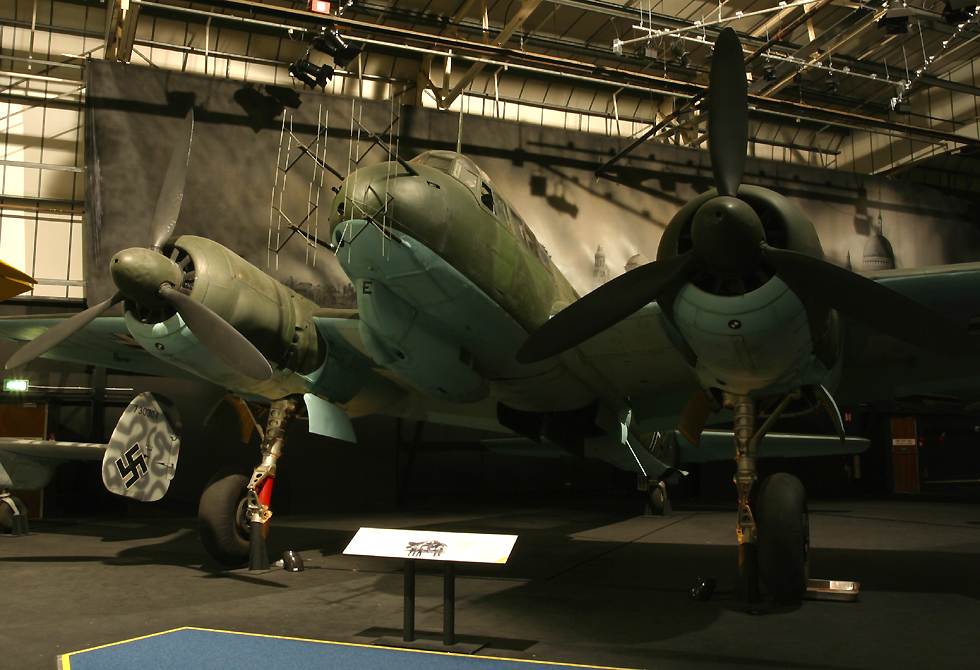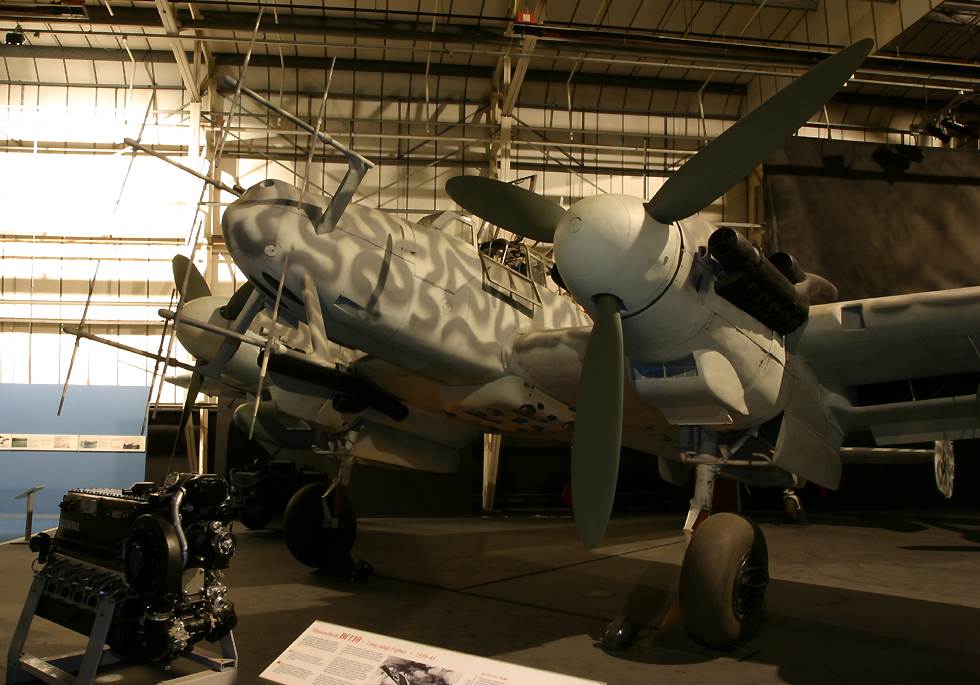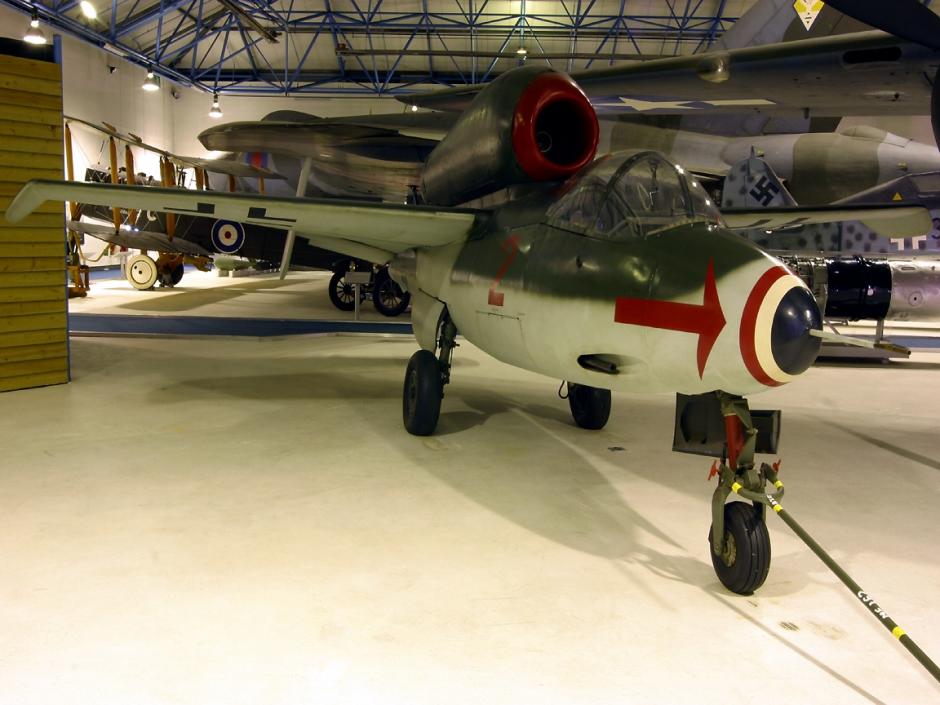German Aircraft at Hendon RAF Museum
|
This aircraft had the greatest production run of any aircraft during world war two, with almost 35,000 built, starting in 1936 and continuing right through until 1945. The model on display here is the Bf 109G or "Gustav", which was the most numerous of the many variants. Not too many Bf 109s are left, and only 3 are in flying condition, including a Bf 109E "Emil" which flew at the 2005 Yankee Air Museum "Thunder over Michigan" airshow near Detroit, and a Bf 109G "Gustav" which flew at the 1996 Wanaka Warbirds airshow in New Zealand. |
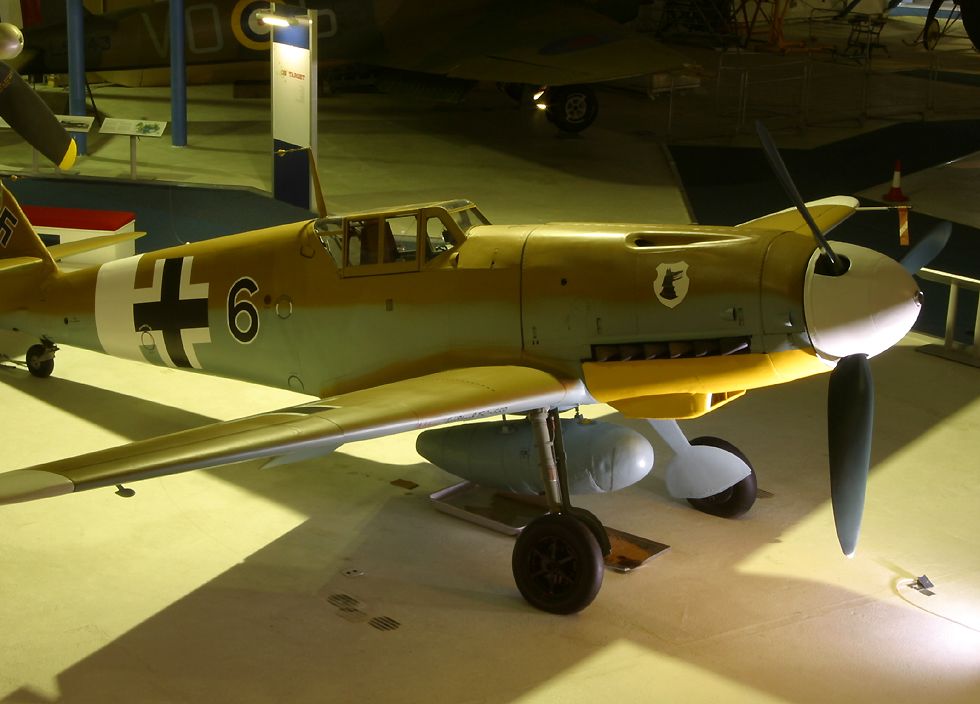 |
|
The Ju 87 was the Nazi's original terror weapon, and was even fitted with a siren to cause panic as it dived down to release its bombs. In Spain and during the early years of the world war it was highly respected by both sides, largely because of the accuracy it achieved as a result of its diving technique. The Germans wasted a lot of effort trying to emulate the early success of the Stuka, but it gradually became apparent that the plane was very vulnerable to modern fighter aircraft like the Spitfire and Mustang, and was even susceptible to ground fire as it pulled back up from its dive. However it continued to be used in anti-shipping and anti-tank roles right until the end. |
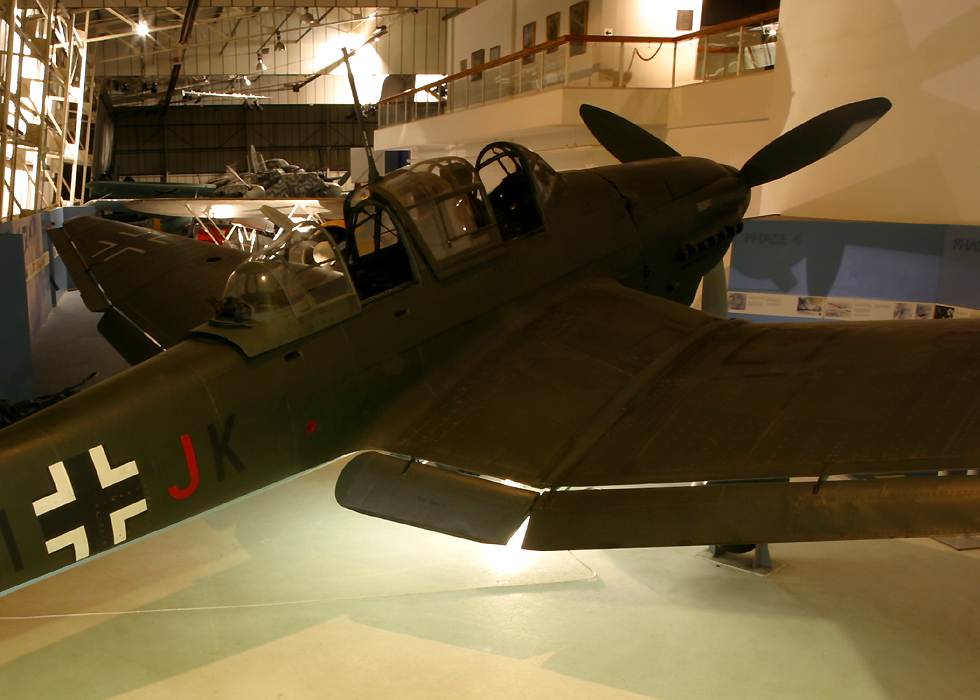 |
|
The Heinkel He 111, like the Bf 109 and Ju 87, started its combat service in Spain and struggled through to the end. Although effective in short range combat and in tactical campaigns in support of German infantry and armour, it was not suited to long-range strategic bombing. Although they caused a lot of damage during the Blitz bombing of British cities like London and Coventry, this was nothing compared to what was done by heavy bombers like the British Lancaster and the American B-17 Flying Fortress. Surprisingly, though, they remained in service in Spain through the 1960s, and one of these was still flying at airshows into the 1990s until it was tragically lost with its crew during a landing accident. |
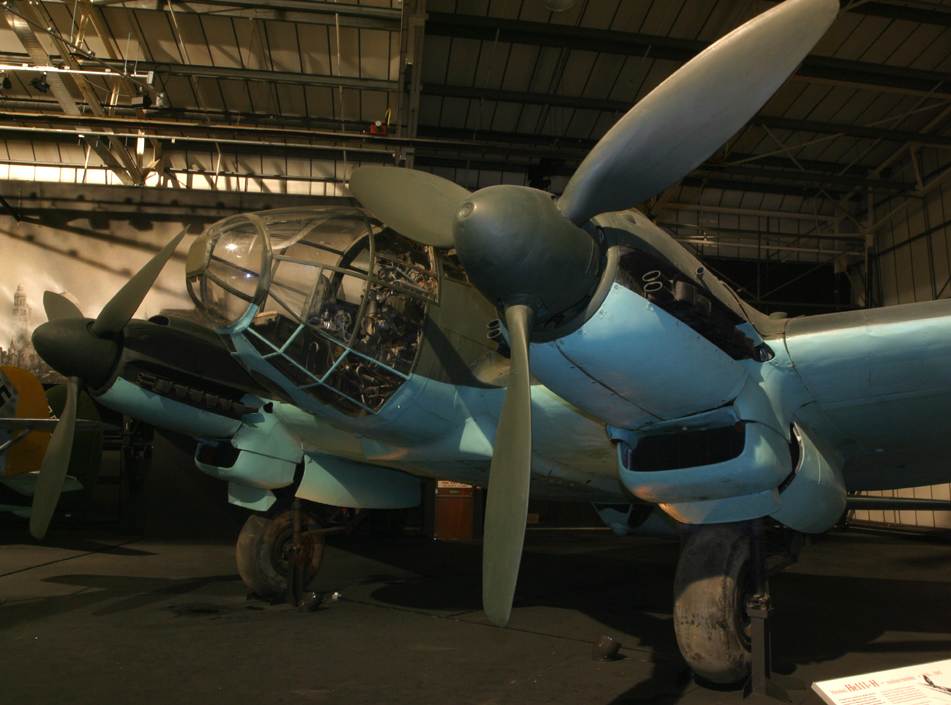 |
